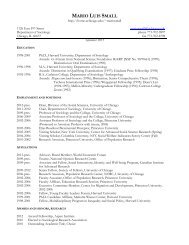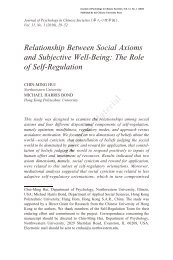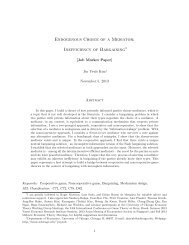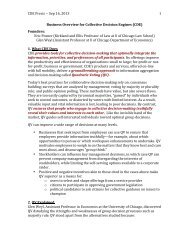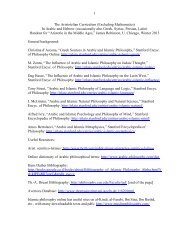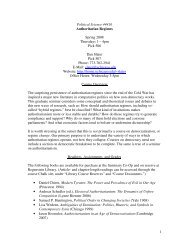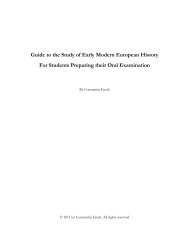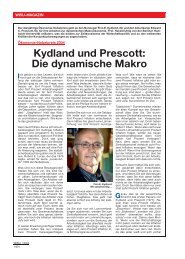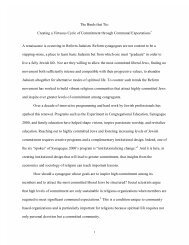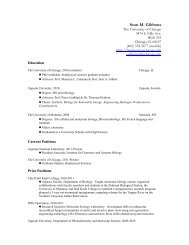Convergence Between Black Immigrants and Black Natives Across ...
Convergence Between Black Immigrants and Black Natives Across ...
Convergence Between Black Immigrants and Black Natives Across ...
You also want an ePaper? Increase the reach of your titles
YUMPU automatically turns print PDFs into web optimized ePapers that Google loves.
Regressions underlying Figure 10a <strong>and</strong> 10b test this hypothesis by running labor force participation on a<br />
set of controls <strong>and</strong> age of immigration dummies. To avoid differences in welfare eligibility requirements, the<br />
sample is restricted to US citizens. For men, we see a clear upward-sloping trend in labor force participation<br />
by age of immigration for all races. For black, Hispanic, <strong>and</strong> Asian men the coefficient starts at about<br />
0, suggesting that these immigrant groups portray the same labor force participation patterns as natives<br />
when they immigrate as newborns. Similar to the across-generation analysis, blacks experience the greatest<br />
gradient in labor force participation patterns in the within generation analysis. All else equal, a male black<br />
immigrating in his late thirties is 20 percentage points more likely to participate in the labor force than a<br />
black immigrant who arrives as a newborn. For females this difference reaches a striking 30 percentage<br />
points.<br />
For log earnings, the convergence between black immigrants <strong>and</strong> black natives is especially pronounced<br />
for low-educated immigrants. To see whether the same holds true for labor force participation, Figure 11a<br />
<strong>and</strong> 11b restrict the sample to individuals with a high school degree or less. Now both, black immigrant men<br />
<strong>and</strong> women who arrive in their late thirties are 30 percentage points more likely to participate in the labor<br />
force than blacks who arrive when they are infants.<br />
Self-selection is more likely to be important as age of immigration increases <strong>and</strong> interacts with the<br />
assimilation effect. If immigrants in their 30s migrate to the US, they are likely migrating in order to find a<br />
job. Hence we would expect labor force participation behavior of their peers to be less important. To test this<br />
hypothesis Figure 12a <strong>and</strong> 12b split the black sample into immigrants from countries with many refugees <strong>and</strong><br />
from countries without. Refugees have different motives for migrating than economic immigrants. While<br />
refugees are likely fleeing political or religious persecution, economic immigrant’s main motive is likely<br />
work-related. Figure 12a <strong>and</strong> 12b show that the strong assimilation in labor force participation of blacks is<br />
indeed driven by immigrants from non-refugee countries. There are two reasons to believe that assimilation<br />
is important beyond its interaction with self-selection. First, children under the age of 15 are probably<br />
accompanying their parents <strong>and</strong> not selecting to leave their home country on their own. The upward-sloping<br />
pattern holds for young children as well as adults. Second, the gradients differ greatly by race, which is<br />
likely to be, at least in part, due to differences in assimilation patterns.<br />
6.3 Robustness Check<br />
Focusing on children alone, the possibility remains that parents who immigrate when their child is an infant<br />
might be very different from parents who immigrate when their child is a teenager. In order to address<br />
this issue, we can look at children who still live with their parents <strong>and</strong> see whether there are any apparent<br />
differences in parental characteristics across age of immigration of the child.<br />
The new sample is restricted to children <strong>and</strong> teenagers that are 15 or younger in the 1990 census. This<br />
allows for most individuals to be old enough to hypothetically make it into the 2000-2011 adult sample<br />
without having to work with the coarse 5-year year of immigration bins in earlier censuses. Figures 12a<br />
14



